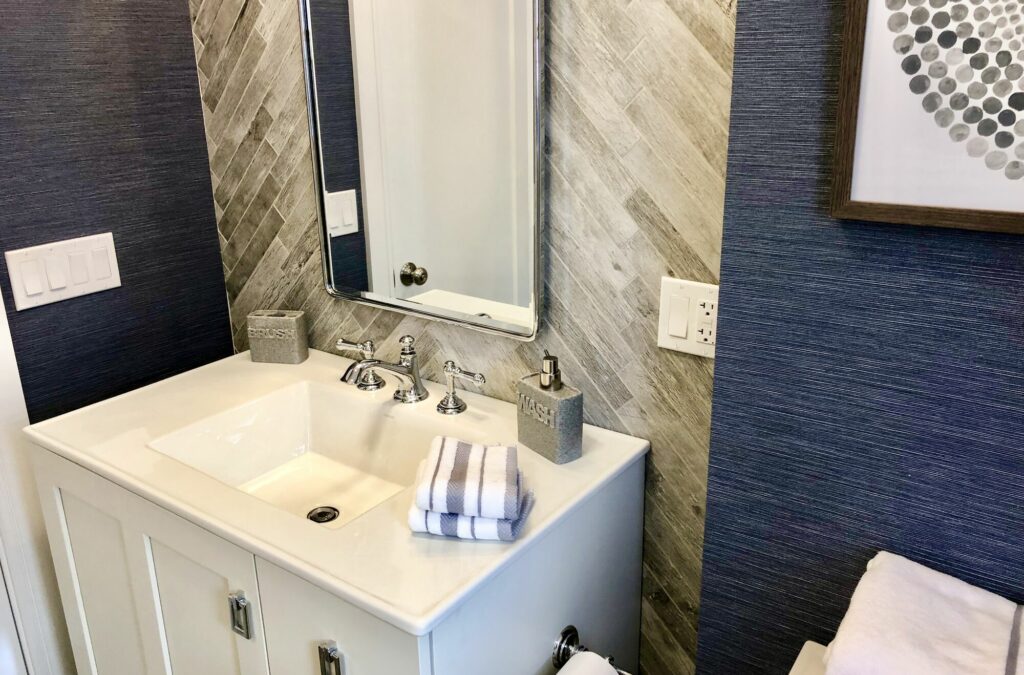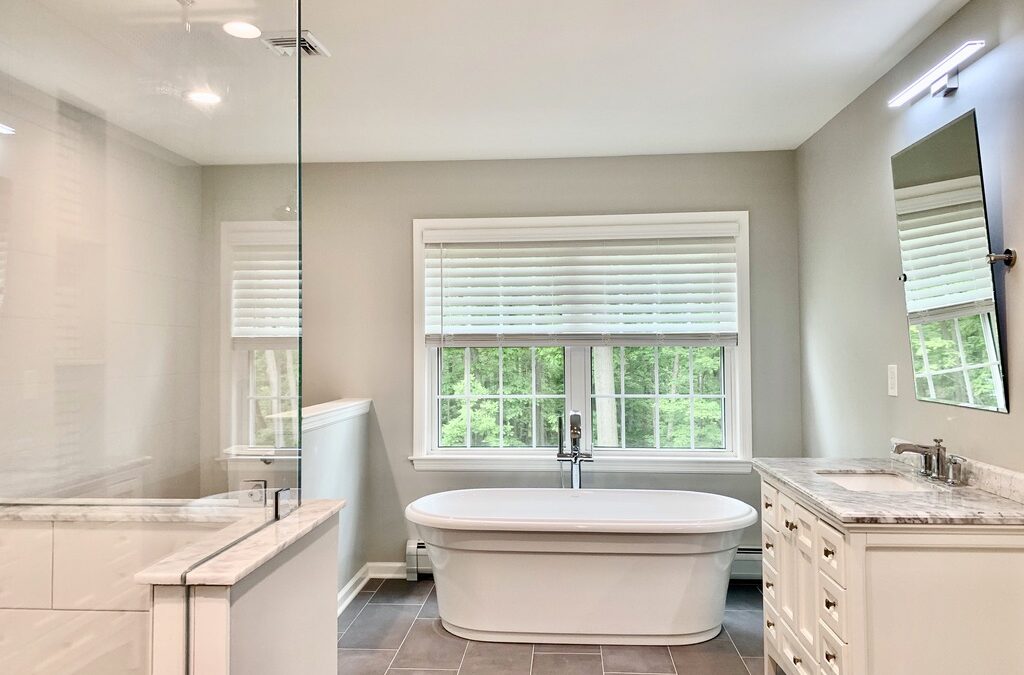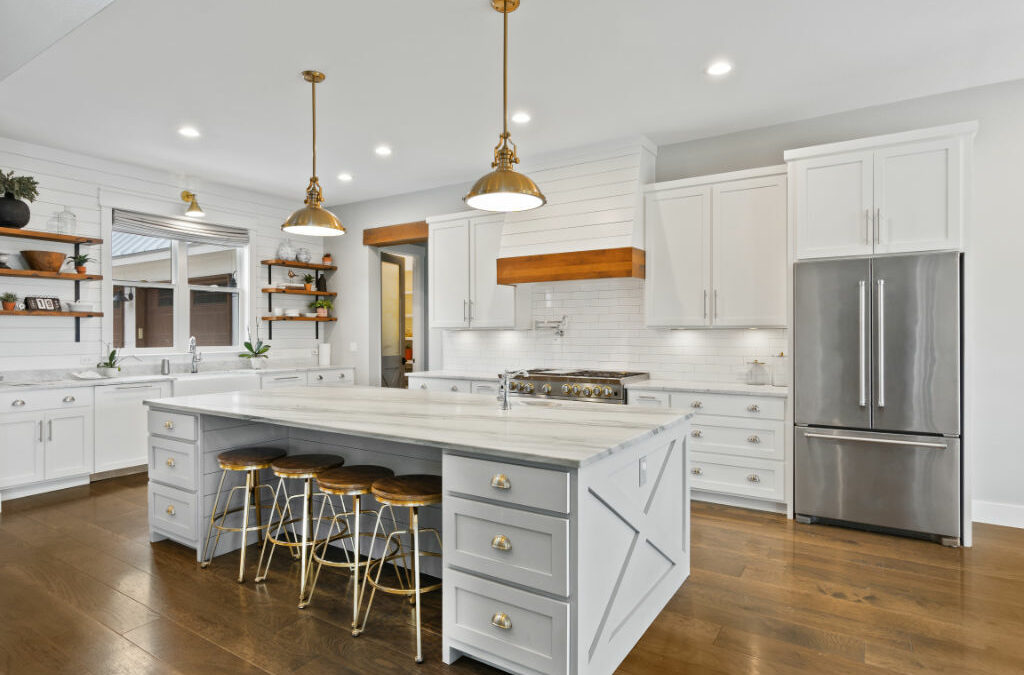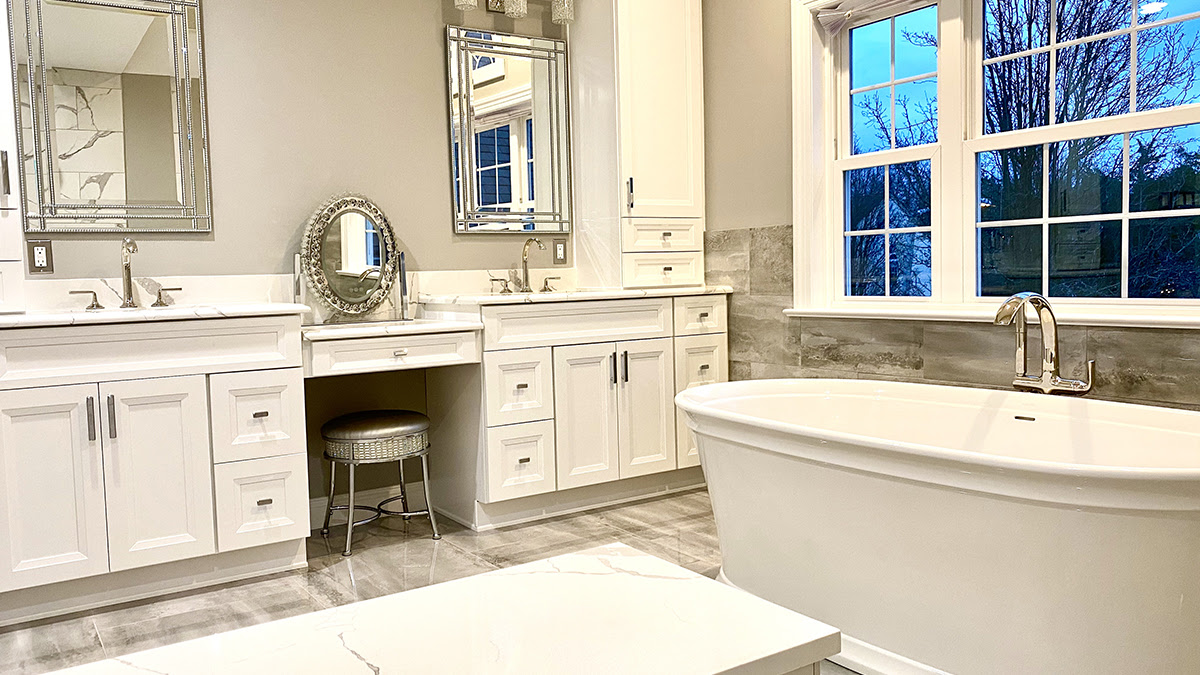
Most New Jersey homeowners don’t understand that their bathroom renovation is going to take twice as long as they originally thought. And we’re not talking about small delays here. Just the permit process alone can turn what seems like a straightforward upgrade into something that drags on for months instead of weeks. When you’re already living without a bathroom that works, the whole timeline goes out the window. Then budget problems start showing up when contractors have to sit around waiting for approvals.
Many people jump into what they think will be a quick refresh, and then halfway through the project, they find out that moving a fixture or updating the electrical work actually needs approval from the town first. This happens in homes all over the state.
Most permit delays can be skipped by knowing which changes need approval before picking up a hammer.
I’ll show you how long each part of the process takes and the best ways to plan around permit requirements – this way, there won’t be any expensive problems halfway through the project.
When You Need Permits for Bathroom Work
The first step when planning a renovation timeline is to find out whether permits are needed. It all depends on what kind of work you’re doing in the bathroom. Lots of people think permits are needed for everything. But that’s not really true.
Making this mistake can derail the whole renovation schedule. Homeowners might end up waiting weeks for permits they never needed in the first place, or work might start without permits and then have an inspector shut everything down.
The permit process can be skipped completely for work like replacing floor tiles or painting the walls. The same goes for swapping out cabinet doors or putting in a new vanity mirror. These kinds of changes don’t touch any of the systems behind the walls, so New Jersey sees them as basic maintenance instead of construction work.
But permits are needed as soon as plumbing fixtures or electrical outlets get moved around. Even moving a light switch to a different spot requires permits. This catches lots of homeowners off guard because they think of it as such a small change.
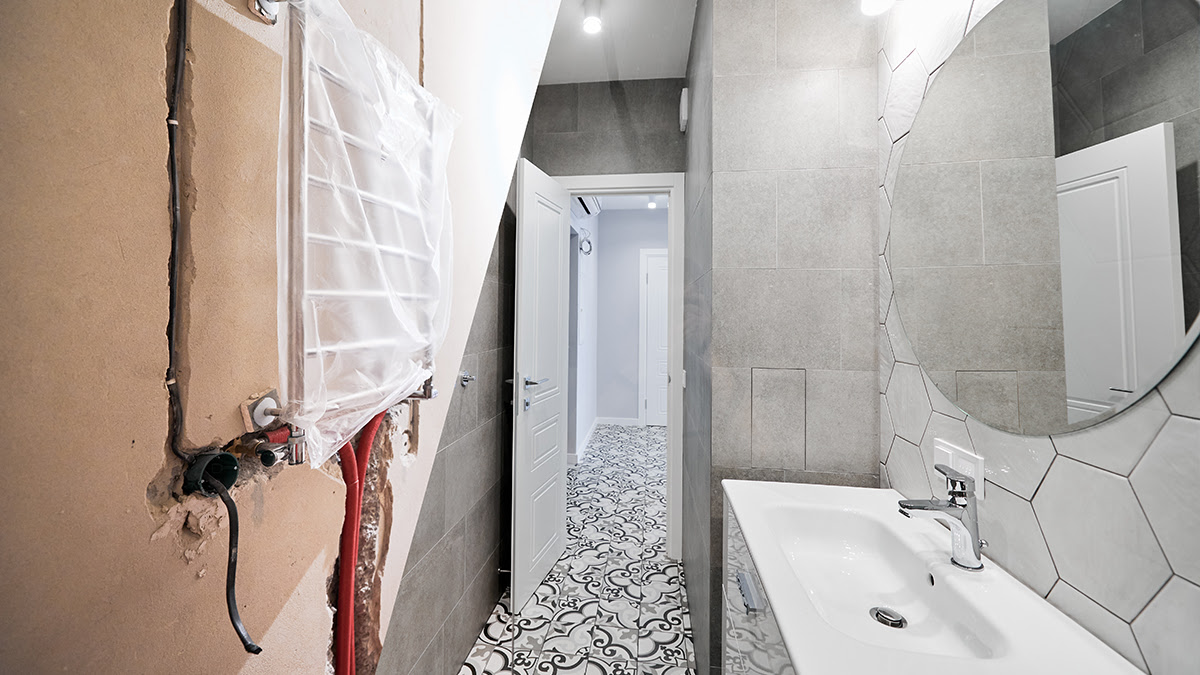
Not having the necessary permits brings projects to a full stop. Inspectors issue stop-work orders that shut down all construction until the right approvals are in place. Contractors might even refuse to keep working without the right permits.
The main difference is about how the local building department looks at “replacement” versus “alteration.” Say someone swaps an old toilet for a new one in the exact same spot – that counts as replacement and doesn’t need permits. But moving that toilet even six inches to the left means changing the plumbing system and needing approval first. That’s how it works in most places.
Contractors run into this problem all the time. People call them to schedule work without realizing they need permits, which pushes projects back by a few weeks.
Your Project Timeline from Start to Finish
The whole process starts with design and permits, which usually takes place during weeks three through five. Anyone planning changes beyond basic cosmetic updates is going to need a permit, especially for plumbing or electrical systems. Most homeowners don’t know just how many changes actually need permits from the city. When permits get delayed, it causes a whole series of scheduling problems that end up impacting every trade that’s working on the project. Let’s say the plumber has to push back their rough-in work because the permits arrive late. That delay then forces the electrician to reschedule their work too, and before anyone knows it, that well-planned timeline starts to fall apart completely.
After permits come through, demolition and construction can start, which usually happens around week eight. This phase usually runs through week twelve or so. But nobody should count on that timeline staying the same. Multiple trades need to coordinate their schedules, and unexpected problems usually show up behind walls once everything gets opened up.
Municipal inspections need to happen at a few key points throughout the project. Inspectors have to check the work before walls get closed up, and they’ll need to come back again when everything is finished. Both plumbing and electrical systems have to pass these inspections before anyone can move forward with the next step. When an inspection fails, the entire project comes to a stop until the problems can be fixed. The contractor won’t be able to install drywall over electrical work that hasn’t passed inspection yet. The inspector pretty much controls when the project can move forward again, and everyone has to work around their schedule to get reinspected.
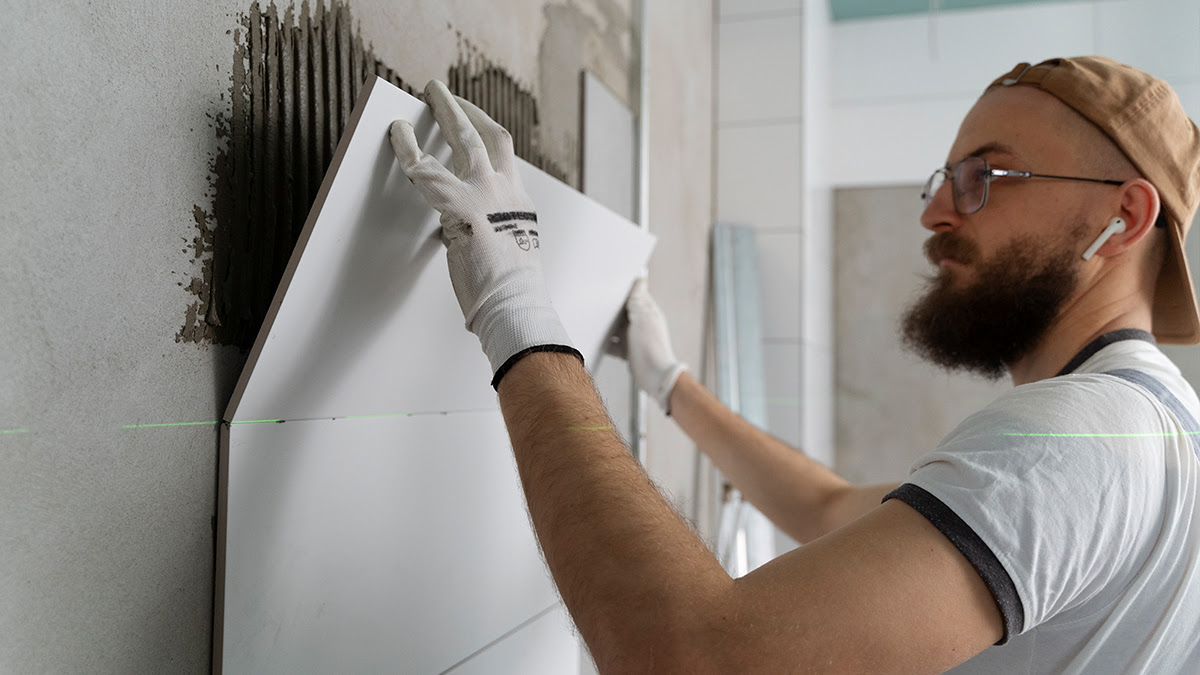
That’s where everything can get pretty tricky. If a rough-in inspection fails, it can push tile installation back by a few weeks. The contractor has to fix whatever problems the inspector found, then schedule another inspection and wait for approval all over again. In the meantime, homeowners are still stuck brushing their teeth in the kitchen sink.
When inspections get delayed, those holdups add up fast and start impacting every phase of renovation that comes after. The tile installer may have to take on another job if the project gets pushed back too far. And then everyone ends up scrambling to find a new installer who can work with the new timeline.
At the very end, homeowners put together a punch list of any leftover items that still need attention. After those items are taken care of and the inspector gives final approval, warranties and care instructions get handed over to officially mark the end of the project. This final walkthrough is when people catch those little details that may have been missed during construction.
How to Get Your Permits Right
One of the best moves homeowners can make is to let their contractor take care of all the permit paperwork. They know exactly what the local building department wants to see and how to present it. When contractors submit the applications, they almost never get sent back for revisions because they already understand the particular requirements that each town has. Most homeowners who try doing this themselves end up having their applications rejected on the first try. Professional contractors already have strong relationships with local officials, and they stay up-to-date with any new requirements. Projects stay on schedule when the applications get approved the first time around.
The paperwork you submit can definitely speed up or slow down permit approval. Detailed architectural drawings that show precise measurements will almost always get approved much faster. That’s where most DIY applications run into problems. If you submit vague sketches or forget electrical plans, the application will get rejected immediately. Contractors should include complete information about every fixture and every system change that’s being planned.
When a solid relationship exists with the local inspector, it pays off in ways that might catch homeowners off guard. Contractors who work in the area all the time already have this benefit. They know which inspectors like specific paperwork styles and what common problems to avoid before they turn into bigger ones. Local inspectors usually remember the contractors who submit clean applications. They’ll give helpful advice during the review process when they already trust the contractor’s work.

Homeowners may feel tempted to skip permits altogether when seeing how long they take and how much they cost. But the consequences are real and expensive. Stop-work orders can shut down an entire project for weeks while you scramble to get the right permits. Even worse, unpermitted work will create big problems when you go to sell the home down the road. Unpermitted renovations can lower a home’s value when you’re ready to sell. Buyers will walk away when they find out about unpermitted work in the inspection. Expensive repairs and legal problems will come up that could have been avoided by just getting the right permits from the start.
Recent updates to New Jersey building codes have made it much clearer what needs permits and what doesn’t. The regulations have changed quite a bit in the past two years. If you’re moving plumbing lines or adding new electrical circuits, you’ll need permits. Basic fixture swaps or cosmetic changes usually don’t need permits unless they change the mechanical systems behind the walls.
Simple Updates That Need No Permits
Some homeowners are looking for ways to refresh their bathroom without dealing with the permit process at all. The truth is that cosmetic updates can actually make a bigger difference than most people realize. You can go ahead and replace vanities, swap out fixtures, and update your tile work without ever touching any plumbing or electrical connections.
These cosmetic changes give you that immediate visual effect while keeping the renovation timeline nice and short. The bathroom gets a fresh look without having to wait weeks for approvals. Most surface-level updates cost just a fraction of what full renovations cost, which means you can put more of your budget toward better materials and finishes. Contractors have come up with creative ways to get the most out of these cosmetic changes. They might install new countertops that use the same sink cutouts or replace a toilet with one that has the same rough-in measurements. Most contractors can get these swaps done in just a single weekend, and basics like fresh paint and new hardware can completely change the space.
Prefabricated shower surrounds have become very popular because they usually fit right over existing tile work. These systems can update your outdated bathroom in just a few days without needing any big construction work. The trick is to work within the existing layout instead of trying to move fixtures around. Prefabricated systems solve multiple problems at once. They get rid of grout maintenance while giving you a waterproof barrier that lasts for decades. The shower goes from dated to modern without the mess and expense of tearing out all that tile.
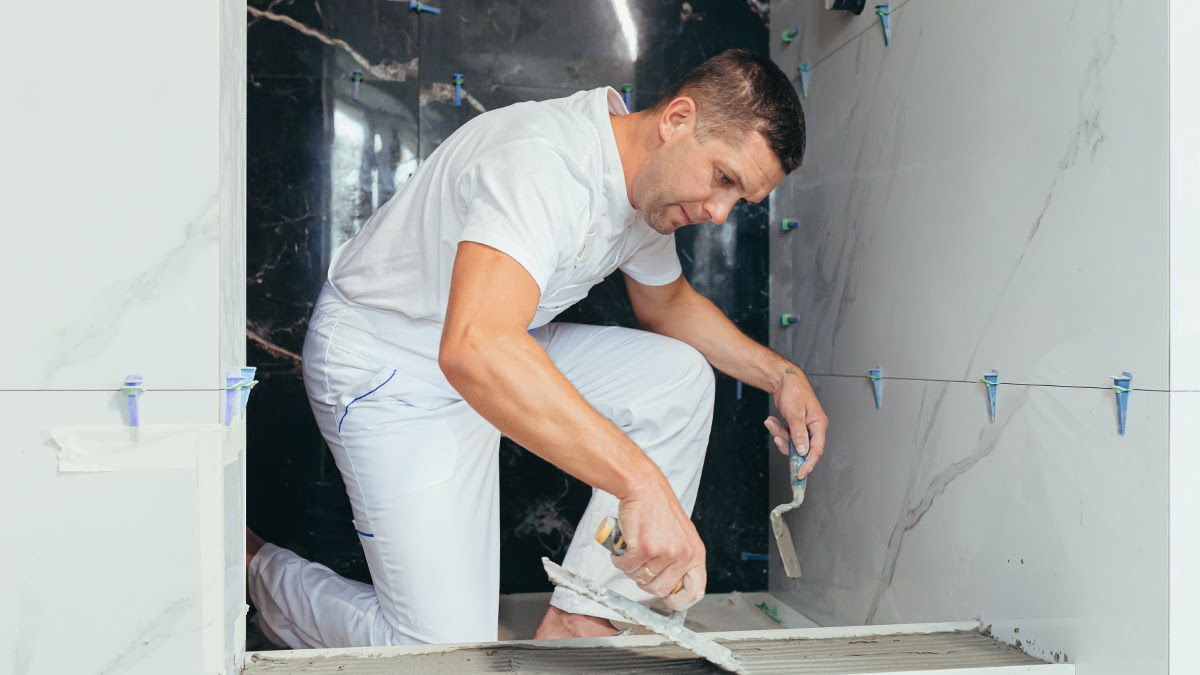
A lot of homeowners I’ve talked to choose to get their permitted work done first and then do the cosmetic updates later on. This strategy lets you spread costs over time while deciding on what style you want. You get all the structural improvements done properly and can take your time with the finishing touches. Plus, it helps skip renovation fatigue.
These cosmetic updates do have some real limitations, though. You can’t move plumbing fixtures to new locations or add electrical outlets without permits. The layout stays the same, which might not fix the main functional problems.
These layout restrictions can become very frustrating when the bathroom needs functional improvements. Your daily routine stays awkward if the sink sits in the wrong place or the shower feels cramped. Surface changes can’t fix poor traffic flow or limited storage space.
Why Permits Are Taking So Long
These days, bathroom remodel permits in New Jersey are taking much longer than anyone wants them to. We’re talking about 2 to 6 months just to get approval, and sometimes it can stretch out even longer than that. It’s a huge change from what contractors were used to seeing just a few years ago.
The main problem is that building departments are stretched way too thin. They’re dealing with a lot more renovation projects than they used to, but don’t have nearly enough staff for all the applications. And they’re being extra careful about checking every single code requirement and making sure all the paperwork is perfect.
Building departments are dealing with an impossible situation. After the pandemic, everyone wants to renovate their homes. But the towns still have the same small budgets they always had. Your permit just sits there in line behind dozens of others, waiting for inspectors who already have way too much on their plates to go through every single detail.

If your project includes any plumbing or electrical work, you can pretty much guarantee it’s going to take even longer. These departments look at those permits extra closely, and they’ll ask for revisions and make you resubmit your plans. What used to be a quick approval has now turned into going back and forth multiple times with new documents. Every time they ask for changes, it tacks on another few weeks to the timeline.
The new computer systems that most towns started relying on haven’t made anything any better yet. Sure – you can submit all your paperwork online now instead of driving to the office. But it still takes just as long for someone to actually look at it and approve it. Some contractors say these electronic systems actually create new problems when files won’t upload correctly or the staff struggles with the technology. When towns switched to electronic permits, they promised it would be faster. But instead of speeding everything up, it just brought a whole different set of problems. The systems crash and force contractors to submit everything all over again, and the staff is trying to learn the software on top of their normal workload. Contractors end up spending hours troubleshooting tech problems instead of focusing on getting projects ready to start.
This situation sets off a chain reaction that messes up your whole project schedule. When permits take 4 months instead of the 4 weeks they used to, your contractor has to push back their start date and rearrange their entire schedule. That means higher costs for you and frustration all around.
Contact Us for Your Free Estimate
I know this might not make sense right away. But when you go through the right channels, you’re protecting your investment and your family’s safety. The extra time you spend on permits and inspections actually does pay off in the long run.
When you get official permits, you create a paper trail that future buyers are always going to want to see. The renovation is now part of the official record, which means there won’t be any questions down the road about whether the work was done right. Insurance companies also look at permitted work differently when it comes time to file a claim.
Those inspection checkpoints help catch problems before they turn into expensive disasters. Any electrical problems get spotted before the walls get closed up. Your plumbing gets tested before the floors go down. And each inspection makes sure the contractor follows today’s safety codes.
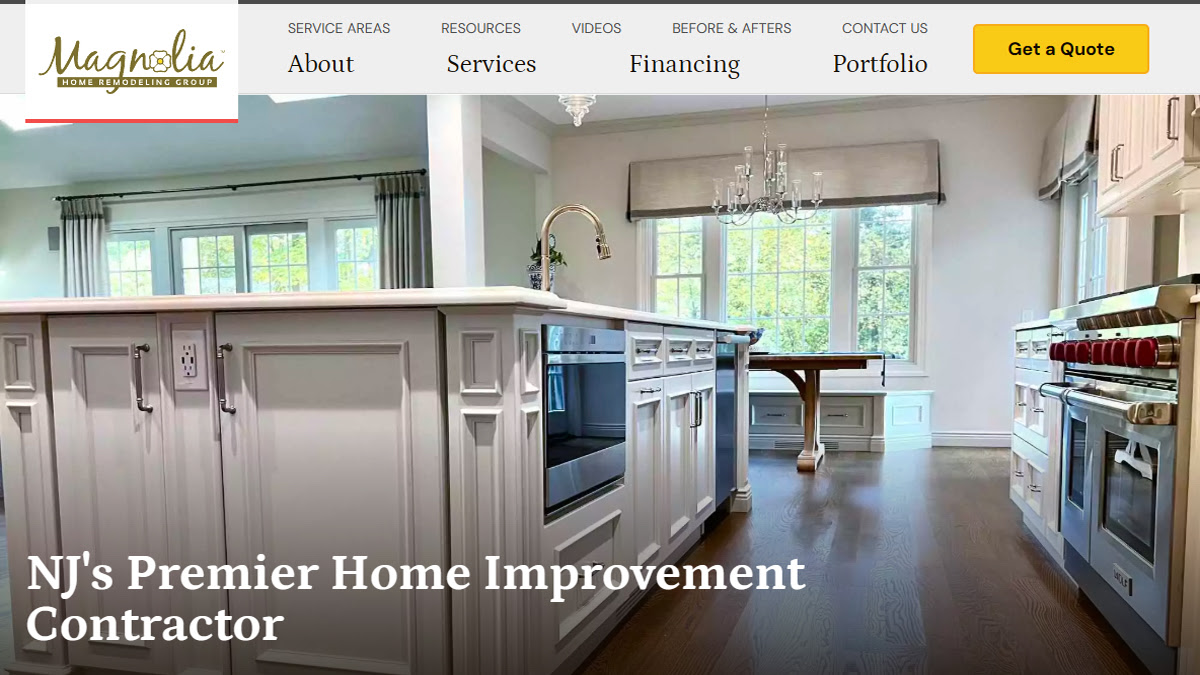
Speaking of which, our mission at Magnolia Home Remodeling Group has been to create functional spaces, and we have put safety and quality first for more than thirty years. Our team understands the permit process inside and out, and we take care of all the paperwork and scheduling so you don’t have to worry about it. We’ve been through this process hundreds of times. If you’re ready to turn your bathroom into a spa retreat or take on other home improvements, we’re here to help through every single step. Check out our project gallery for ideas or contact us for a free estimate – we work with New Jersey homeowners to make the remodeling process as smooth as possible.

